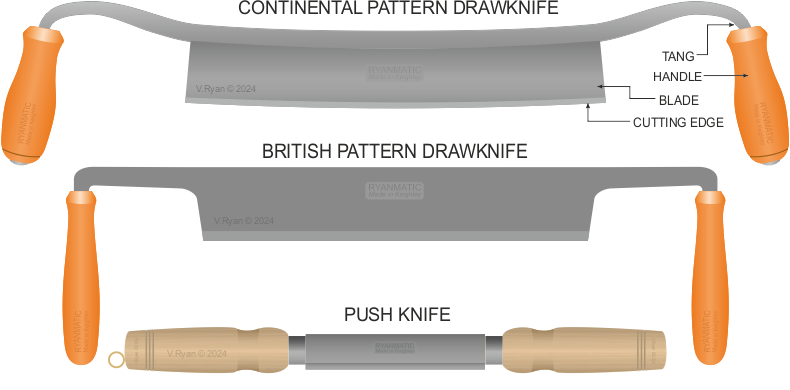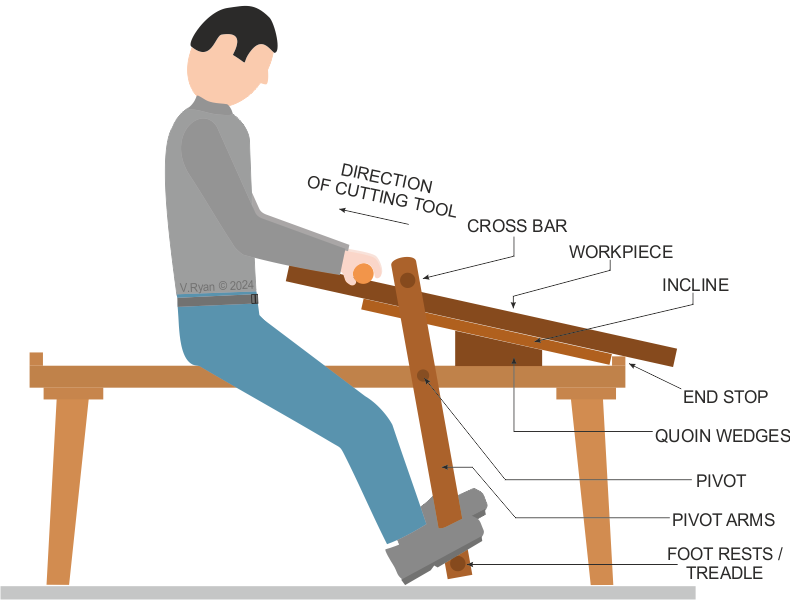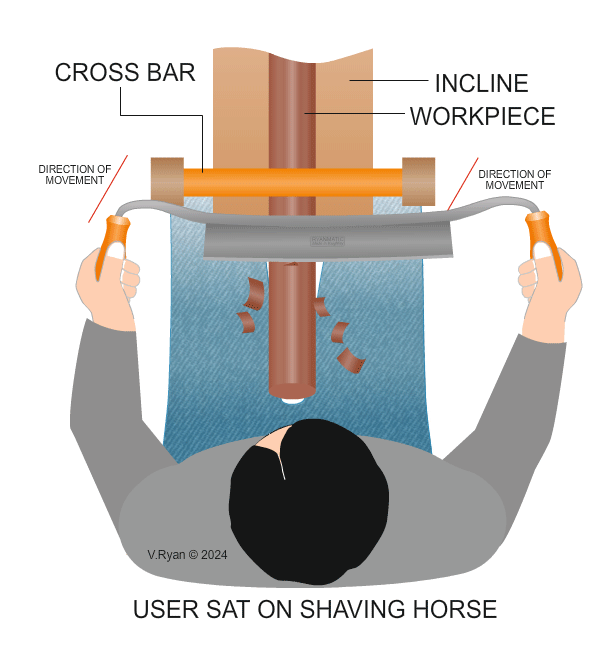| CLICK HERE FOR INDEX PAGE |
| |
| DRAWKNIVES - (DRAW SHAVES - SHAVING KNIFE) |
V.Ryan © 2024 |
| |
| PDF FILE - CLICK HERE FOR PRINTABLE WORKSHEET |
| |
| CLICK HERE FOR POWERPOINT VERSION OF WORKSHEET |
| |
| A traditional drawknife is used to ‘shave’ wood, until the desired shape is reached. There are different types, but they all have a handle at each end of a hardened steel blade. The continental pattern and british pattern are used by ‘drawing’ the drawknife towards the user, removing thin shavings (usually cutting tools are pushed away from the user). Drawknives are ideal when forming arcs and curves in wood, or ‘cylindrical shapes’. They are related to ‘spokeshaves’, but are more difficult to use. The user sits astride a special bench called a ‘shaving horse’, pulling the drawknife towards himself / herself, working with the grain of the wood. It is possible to remove a large amount of materials quite quickly. However, practice is required. |
| |
 |
| |
|
|
| |
The user sits on the shaving horse and traps the workpiece between the cross bar and the incline. The quoin wedges help to hold the workpiece securely against the cross bar. Pressure is supplied by the user’s feet pushing the pivot arms forward.
The draw knife is positioned on the workpiece and drawn backwards. This is repeated, each time removing thin shavings, until the workpiece is ‘carved’ to the required shape. |
| |
 |
| |
|
|
| |
| The diagram below, shows the user holding the drawknife in both hands. He / she is sat on a shaving horse, with the workpiece trapped firmly between the ‘incline’ and the ‘cross bar’. The user pulls the drawknife backwards and diagonally, whilst at the same time altering the angle of the blade, so that the cutting edge ‘bites’ into the surface, producing a fine ‘shaving’ of wood. This movement is repeated until the amount of wood removed is suffice. |
| |
 |
| |
| CLICK HERE FOR EQUIPMENT AND PROCESSES INDEX PAGE |
| |
|
| |
|


